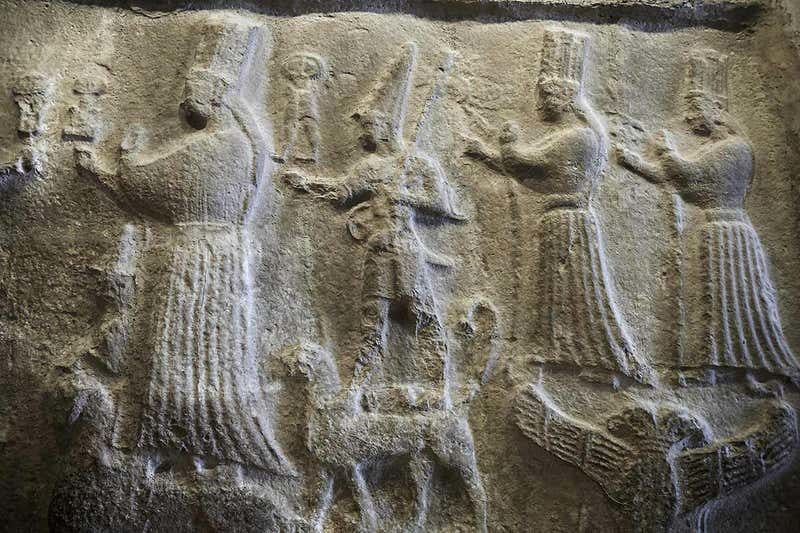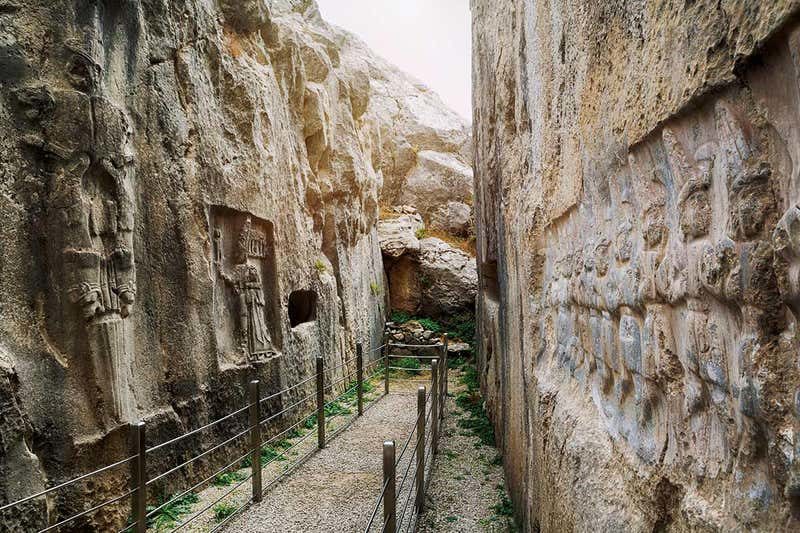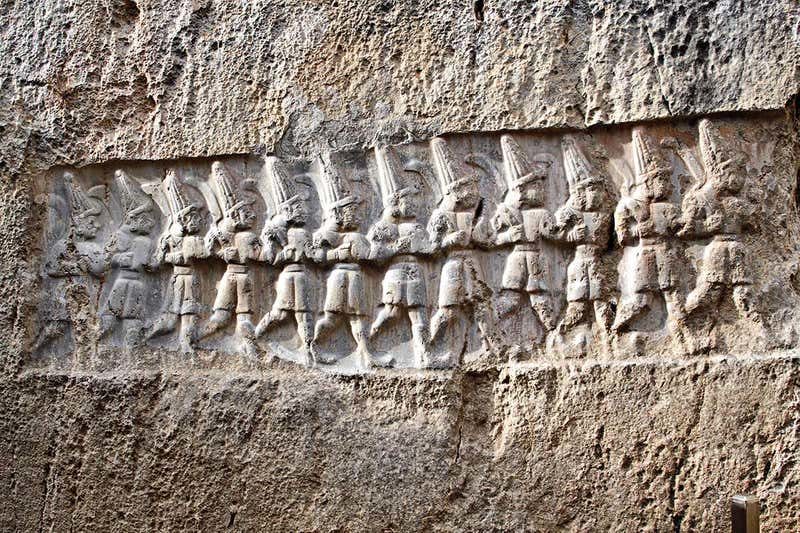Perhaps no longer. A controversial theory suggests the ancient carvings may have functioned as a calendar, with a level of sophistication way ahead of its time. "It's not only a striking idea, it's reasonable and possible," says Juan Antonio Belmonte at the Institute of Astrophysics of the Canary Islands, Spain, who wasn't part of the work.
Hattusa was the capital city of the Bronze Age Hittite empire, based in what is now Turkey. A few kilometres to the north-east of Hattusa are the ruins of an ancient religious sanctuary centred on a large limestone outcrop.
Archaeologists believe it was one of the holiest of Hittite sites, but its exact purpose is unknown. Even its original Hittite name is a mystery: today it is known simply as Yazılıkaya, a Turkish term meaning "inscribed rock".
"Yazılıkaya has an aura to it," says Eberhard Zangger, president of Luwian Studies, an international non-profit foundation. "Part of it is because it's an unsolved enigma, part of it is the beauty of the place."
The site has been described as the Sistine Chapel of Hittite religious art for the quality of the rock carvings preserved there. Yazılıkaya and Hattusa have UNESCO World Heritage Site status, and the carvings on the rock have been studied by scholars for decades. But according to Zangger, they all overlooked something.
On the northern wall of a roofless limestone chamber at Yazılıkaya, there is a panel on which the supreme couple among Hittite gods are carved. On the western and eastern walls, more carved deities form two long processions marching towards the supreme couple. The eastern procession currently contains 17 deities, but Zangger and his colleague Rita Gautschy at the University of Basel, Switzerland, argue there were originally two more based on engraved symbols and deity-shaped gaps.
The western procession is divided into two groups: one containing 12 deities and the other 30. Finally, there are curious horizontal benches carved into the rock below each procession.
Zangger and Gautschy suggest the Hittites used the carvings as a calendar, keeping time by moving heavy stone markers along the benches beneath the processions.
They believe the procession of 30 deities corresponded to the lunar cycle and marked a lunar month, which contains on average 29.53 days. At the beginning of the month, the marker would be placed beneath the deity at the front of the procession, and each day the Hittites shifted it one deity backwards. (Local hieroglyphs are always read in the opposite direction to the way any figures or faces are looking.)
Significantly, says Gautschy, if the Hittites started the month with a new moon then, on the night of a full moon, the marker would always lie below one of two unusual bull-like figures in the procession who together hold up a large dish. The researchers say it would make sense for the Hittites to pay particular attention to the full moon because it was the one part of the month when a portentous lunar eclipse might occur.
When the marker lay below the deity at the rear of the procession, the month was up and the Hittites would have moved the marker back to the front of the procession to start again, say the researchers. At the same time, the Hittites moved a second marker that lay below the procession of 12 deities, and so helped them track the passing months.

This drift can be largely removed by adding an additional intercalary month every 19th year - making the timepiece run on what is known as the Metonic cycle. Zangger and Gautschy suggest that the Hittites used the procession of 19 deities on the eastern wall to keep track of this. They think a stone marker was moved along this procession once a year to help the Hittites work out when to add extra months over a 19-year cycle (Journal of Skyscape Archaeology, DOI: 10.1558/jsa.37641).
We know from earlier texts that the idea of three-year intercalation dates back a couple of millennia before Yazılıkaya was built. But conventional wisdom is that it was only about 2500 years ago that the more sophisticated Metonic cycle came into widespread use.
"We would probably not expect knowledge of the 19-year cycle in the 2nd millennium BCE," says Gautschy. If the Hittites did follow such a calendar, they must have been influenced by exceptional astronomers.
It isn't impossible that there was a Hittite equivalent of the astronomer Kepler in Hattusa at the time, says Ian Rutherford, a classicist at the University of Reading, UK. But he says it is odd that there are no traces of such an astronomer in the vast archives of ancient texts that have been discovered in Hattusa. It is one reason why he is sceptical - although open-minded - about the calendar idea.
Belmonte, however, is enthusiastic. He has previously shown that many Hittite buildings are aligned to important astronomical events like the summer solstice. He envies Zangger and Gautschy for being the first to notice that the Yazılıkaya deities could have been used to observe a Metonic cycle. "I had this in front of my eyes and I was unable to see it," he says.
Other astronomers are more cautious. "The numbers in play - 12, 30 and 19 - are astronomically suggestive," says Edwin Krupp, director of the Griffith Observatory in Los Angeles. But he says that is far from proof that the site served as a calendar - a point Gautschy is keen to stress too.
Krupp also sees a couple of problems with the calendar idea. Because of the nature of the site's preservation, we can't be sure the third group originally contained 19 deities. If there were just the 17 it now contains, the Metonic-like pattern breaks down.
What's more, many of the deities depicted at Yazılıkaya have their names carved into the rock. The calendar idea would suggest that each deity name would be associated with a particular day of the month or month of the year, says Krupp - but he points out there is little in the Hittite texts to suggest this was the case.
In fact, says Rutherford, the Hittite written records seem to paint a picture of a society that was remarkably unconcerned about the heavens. "That may have something to do with the climate: it rains a lot in the Anatolian highlands," he says. Cloud cover might have impeded careful astronomical observations.
But Zangger thinks Hittite scholars place too much emphasis on the texts. For instance, archaeological evidence shows the Hittites were impressive hydraulic engineers, but Zangger says they left no records on the subject.
"Hittite society consisted of more than is reflected in the documents," he says. "Perhaps the carvings really are just gods walking in a certain sequence - but there seems to be so much more to it."





trolling hard, I think